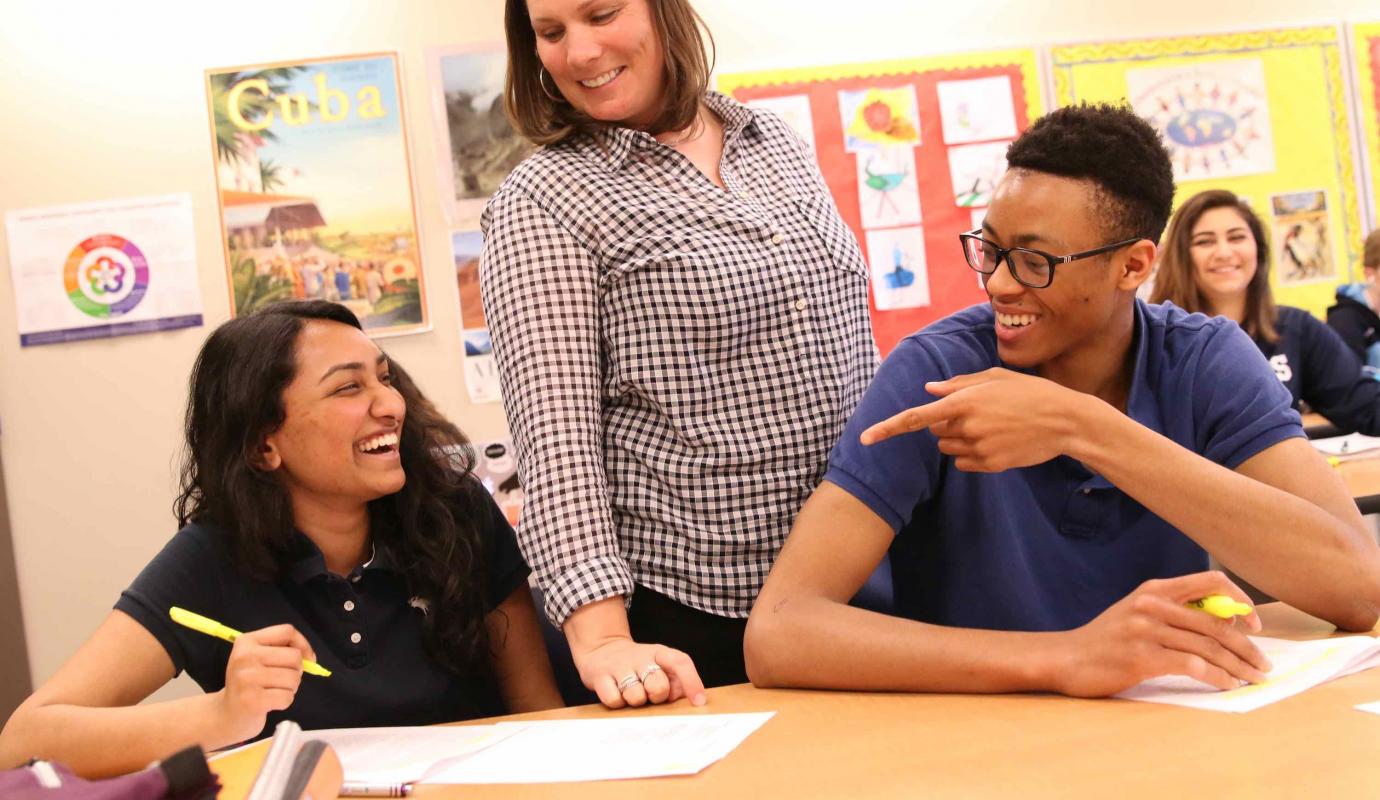Meditation and mindfulness. Breathing and balance. Emotional intelligence and engagement. Happiness and health (physical and emotional). From headlines to book titles, we see more and more on these topics, in the world at large and in our Wellington community.
Why?
I can answer the why for Wellington. Two and half years ago, members of our school administration read Dr. Martin Seligman’s book “Flourish,” and decided, yes, it was a part of our mission to graduate flourishing students capable of leading lives filled with a sense of satisfaction and a predilection to focus on the positive. It became imperative that we teach well-being because it is an “antidote to the runaway incidence of depression, a way to increase life satisfaction, and an aid to better learning and more creative thinking,” as Seligman wrote.
"PERMA permeates Wellington. From wise words and service learning in lower school to gratitude journals and growth mindsets in middle school, as well as upper school courses on the how, why, and science of happiness, we are committed to graduating flourishing students.”
How do we get to flourishing?
In a nutshell, we learn, live, and teach Seligman’s PERMA to students, parents, and teachers. Keep reading for the crash course…
P is for positive emotions. Emotions, after all, affect how you think, what you pay attention to, your identity, your relationships…in other words, pretty much everything! Social scientists posit that due to evolution, and the fight for survival, we tend to view the world with a bit of a negative bias. However, in order to have a flourishing life, we need to accept the full range of our emotions and focus on the positive.
Barbara Frederickson did a lot of research in this area and developed the Broaden and Build theory which states that building positive emotions broadens our thinking and attention, builds our resources, enhances resilience, undoes the impact of negative emotion, and triggers upward spirals. So, start noting when you experience the Top Ten: joy, gratitude, serenity, interest, hope, pride, amusement, inspiration, awe, and love. Then make a point to experience them more!
E is for engagement. Mihaly Csikzentmihaly has done extensive work around the idea of flow. He believes that “the best moments occur if a person’s body or mind is stretched to its limits in a voluntary effort to accomplish something difficult and worthwhile. Optimal experience is thus something we make happen.” Educators know this is what we strive for in the classroom – students who love a highly challenging experience. We strive for this because we know that engaged living in adolescents predicts life satisfaction, gratitude, pro-social behaviors, increased school enjoyment, and increased academic grades (Froh et. Al, 2010).
R is for positive relationships. Positive and secure relationships correlate directly to the reduction of anxiety and depression (Fleming, Baum, Gisriel & Gatchel, 1982), motivation and school engagement (Wentzel, 1998; Furrer & Skinner, 2003), and subjective well-being (Myers, 2000; Diener & Seligman, 2002). But they also allow us the opportunity to explore, take risks, and try new experiences because we know we have people to count on, fall back on, and turn to for reassurance and encouragement. While we hope that our relationships are positive, we know that every single interaction we have with others is important.
M is for meaning. Positive purpose. As our society moves from being introspective to outrospective, and we consider the importance of gratitude, we must take a look at our perspective on life. We have the hedonistic view, or the life of I, where we indulge in leisure activities and rest and fun, which make us feel good in the short term. On the other hand, we have the eudemonic perspective, or the WE world. It is in this WE world, where we help others, and learn and develop skills that will help us gain greater long term life satisfaction. Knowing one’s self, identifying goals to grow as well as serve, helps to create a positive sense of purpose.
A is for accomplishment. Directly related to meaning, accomplishment focuses on developing individual potential through striving for and achieving meaningful outcomes. At Wellington, we believe that the key to accomplishment is developing a growth mindset. Using Dr. Carol Dweck’s research and work around a growth mindset, we seek to instill a willingness to try new things, learn from mistakes, be open to feedback and celebrate the successes of others. One of the essential tools in fostering a growth mindset is to use process praise instead of person praise (please click here for examples, and to read more).
PERMA permeates Wellington. From wise words and service learning in lower school to gratitude journals and growth mindsets in middle school, as well as upper school courses on the how, why, and science of happiness, we are committed to graduating flourishing students. This summer and throughout this year, over 20 faculty and staff members participated in our TWS Wellbeing Institute studying PERMA and working together to find ways to instill it at Wellington.
So, how can you get started today? Pick one, and then another:
- Notice your emotions. When do you experience joy, love, pride, etc.? Seek ways to experience those positive emotions more.
- Engage yourself. Dive into something you love, and stretch yourself. Try to experience flow.
- Build and maintain positive relationships.
- Live in the WE world. Practice gratitude and give back to others.
- Look at failure as a way to grow. Try new things. When you fail, bounce back AND spring forward.
– Erin Noviski, director of well-being and Spanish teacher
Recommended Reading
Flourish
Martin E.P. Seligman, 2011
Flow: The psychology of Optimal Experience
Mihaly Csikzentmihalyi, 1990
The How of Happiness
Sonja Lyubomirsky, 2007
Love 2.0
Barbara Frederickson, 2009
Happier
Tal Ben-Shahar, 2007
